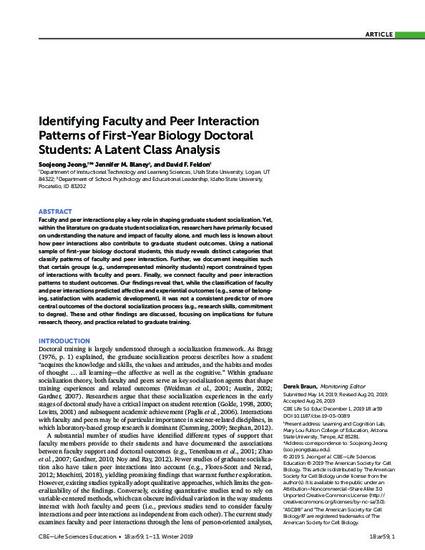
Faculty and peer interactions play a key role in shaping graduate student socialization. Yet, within the literature on graduate student socialization, researchers have primarily focused on understanding the nature and impact of faculty alone, and much less is known about how peer interactions also contribute to graduate student outcomes. Using a national sample of first-year biology doctoral students, this study reveals distinct categories that classify patterns of faculty and peer interaction. Further, we document inequities such that certain groups (e.g., underrepresented minority students) report constrained types of interactions with faculty and peers. Finally, we connect faculty and peer interaction patterns to student outcomes. Our findings reveal that, while the classification of faculty and peer interactions predicted affective and experiential outcomes (e.g., sense of belonging, satisfaction with academic development), it was not a consistent predictor of more central outcomes of the doctoral socialization process (e.g., research skills, commitment to degree). These and other findings are discussed, focusing on implications for future research, theory, and practice related to graduate training.
